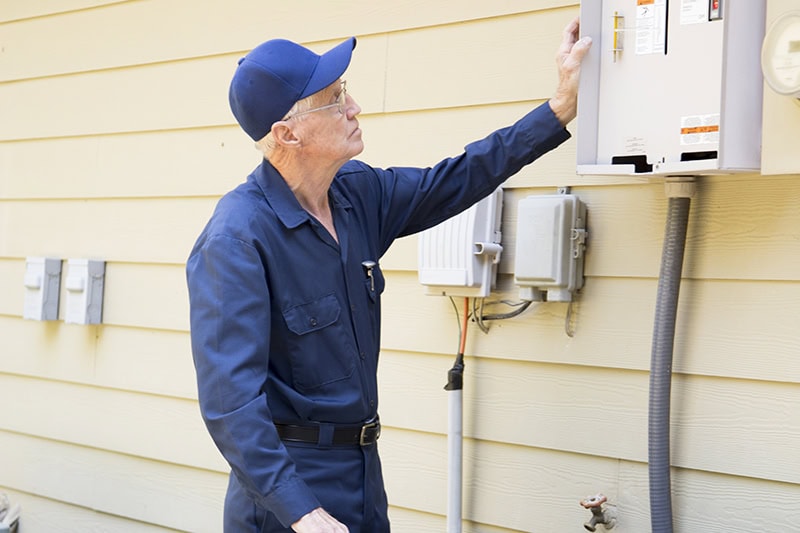Whole-Home Generator Installation: What to Expect

A power outage can happen in Dallas, when you least expect it, leaving you without lights, heating or cooling, and essential appliances. A whole-home generator offers a reliable backup solution, keeping your household running smoothly even during extended outages.
But how does the installation process work for a whole-home generator?
Installing a standby or whole-home generator involves several key steps, from selecting the right unit for your home’s power needs to ensuring a safe and proper setup. A professional generator installation ensures it is correctly connected to your home’s electrical system and is ready to activate automatically when needed.
Generator Authority believes in making all our customers informed customers. We created this whole-home generator installation guide to walk you through the entire process, giving you a clear understanding of what to expect—from initial planning to final testing.
With the right preparation and expert installation, you can enjoy the peace of mind that comes with an uninterrupted power supply, no matter the weather.
Whole-Home Generator Installation Process
Whether you experience frequent power disruptions or simply want peace of mind, installing a standby generator can provide uninterrupted electricity when you need it most. But what does the installation process look like?
Step 1: Initial Generator Consultation and Site Assessment
The first step in the standby generator installation process is scheduling a consultation with a professional generator installer from Generator Authority.
During this appointment, our technician will assess:
- The size of your home and electrical load requirements.
- Essential appliances and systems you want to power during an outage.
- The best location for the generator, ensuring it meets safety and zoning regulations.
- Fuel source availability (natural gas, propane, or diesel).
A thorough onsite assessment ensures we recommend the right generator size and type for your home’s needs.
Step 2: Selecting the Right Generator
Whole-home generators come in various sizes, typically ranging from 10 kW to over 50 kW, depending on the number of appliances and systems you need to power. Our installer will help you determine the appropriate generator capacity to ensure a seamless operation during an outage.
Once all the details are discussed, you’ll choose the generator that fits your power needs and budget. Our installer will provide a cost estimate for the unit and installation, and then, your purchase and installation contract will be signed.
Step 3: Permitting and Preparation for the Generator Installation
Before installation begins, your installer will handle the necessary permits and approvals required by local codes and regulations. This step is crucial to ensure your generator meets all safety standards and legal requirements.
During this phase, any necessary preparations are also completed, such as:
- Coordinating with utility providers if a natural gas line needs to be installed or upgraded.
- Ensuring proper clearance around the generator site for ventilation and maintenance access.
- Preparing a stable foundation, such as a concrete pad, for the generator to sit on.
Step 4: Generator Installation
On installation day, our professional team will deliver and place the generator in the designated location.
Here’s what happens next:
- Mounting the Generator: The unit is securely installed on the concrete pad or other prepared surface.
- Connecting the Fuel Source: Whether it’s natural gas, propane, or diesel, our installer will connect the generator to its fuel supply.
- Electrical Wiring: The generator is wired to your home’s electrical panel via an automatic transfer switch (ATS). This switch automatically detects power outages and transitions the home to generator power.
- Testing and Inspection: Once connected, the system undergoes a thorough inspection and testing process to ensure it functions correctly and safely.
Step 5: Generator System Setup and Homeowner Training
After installation, the technician will guide you through the operation of your new generator, covering key aspects such as:
- How to start and stop the generator manually.
- Understanding the automatic transfer switch operation.
- Routine maintenance tasks to keep your generator in peak condition.
- How to monitor and troubleshoot common issues.
Many modern generators also feature remote monitoring capabilities, allowing you to check system status via an app or online portal. We’ll go over all that, too, if that’s a model you purchased.
Step 6: Final Inspection and Maintenance Recommendations
Once installation and setup are complete, a final inspection is conducted to ensure everything is working properly. Your installer may recommend a maintenance plan to keep your generator running efficiently.
Routine maintenance tasks include:
- Checking fuel levels and lines.
- Inspecting and replacing air filters.
- Running periodic self-tests to ensure readiness.
Enjoy Reliable Power When You Need It
With your whole-home generator installed, you can rest easy knowing your Dallas, home is protected from power outages. Investing in a standby generator provides convenience, security, and peace of mind, ensuring your household remains powered during emergencies.
If you’re considering a whole-home generator installation, contact Generator Authority at 817-984-3600 or request service online to get started. With the right system in place, you’ll never have to worry about losing power again!
